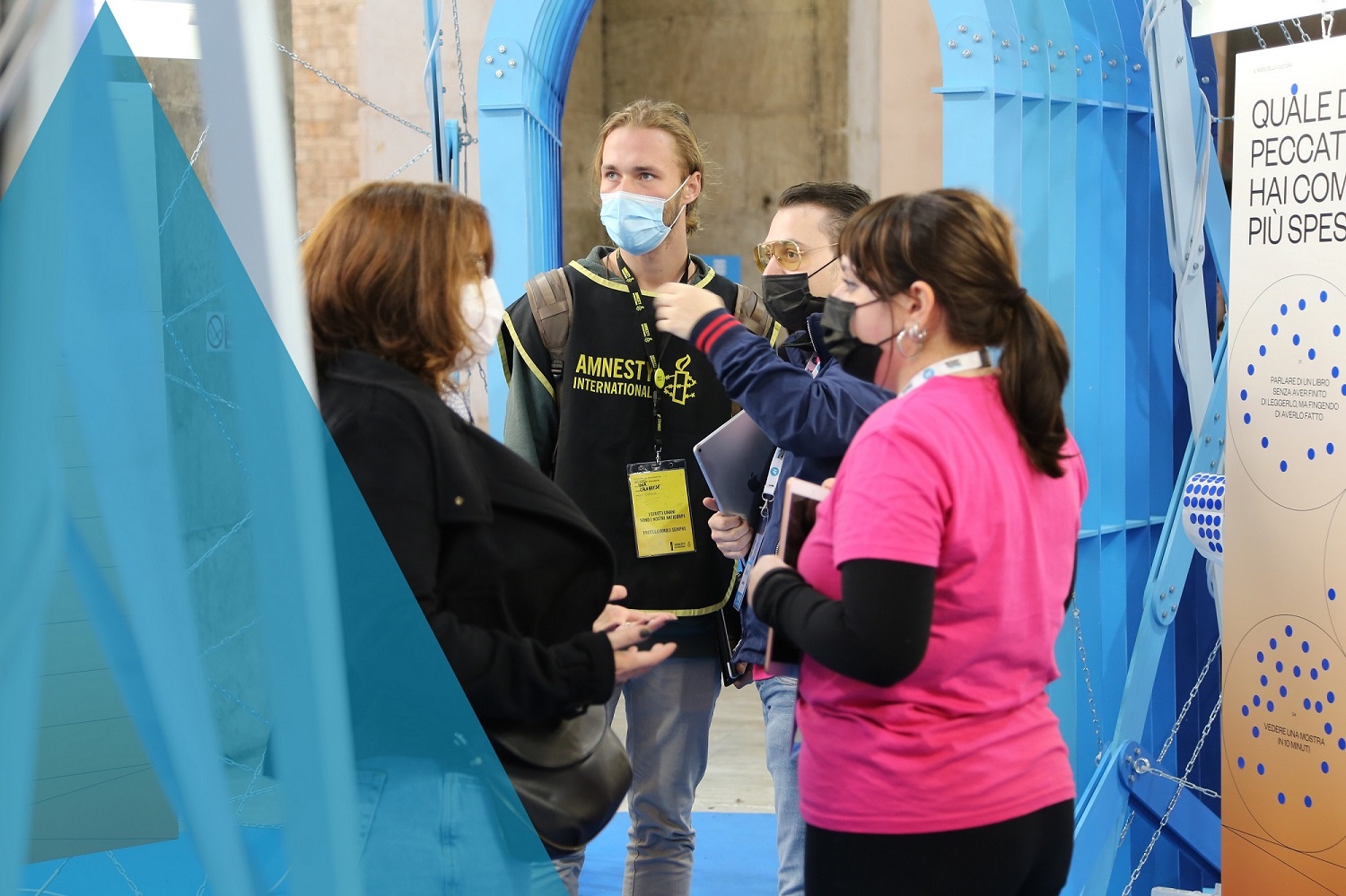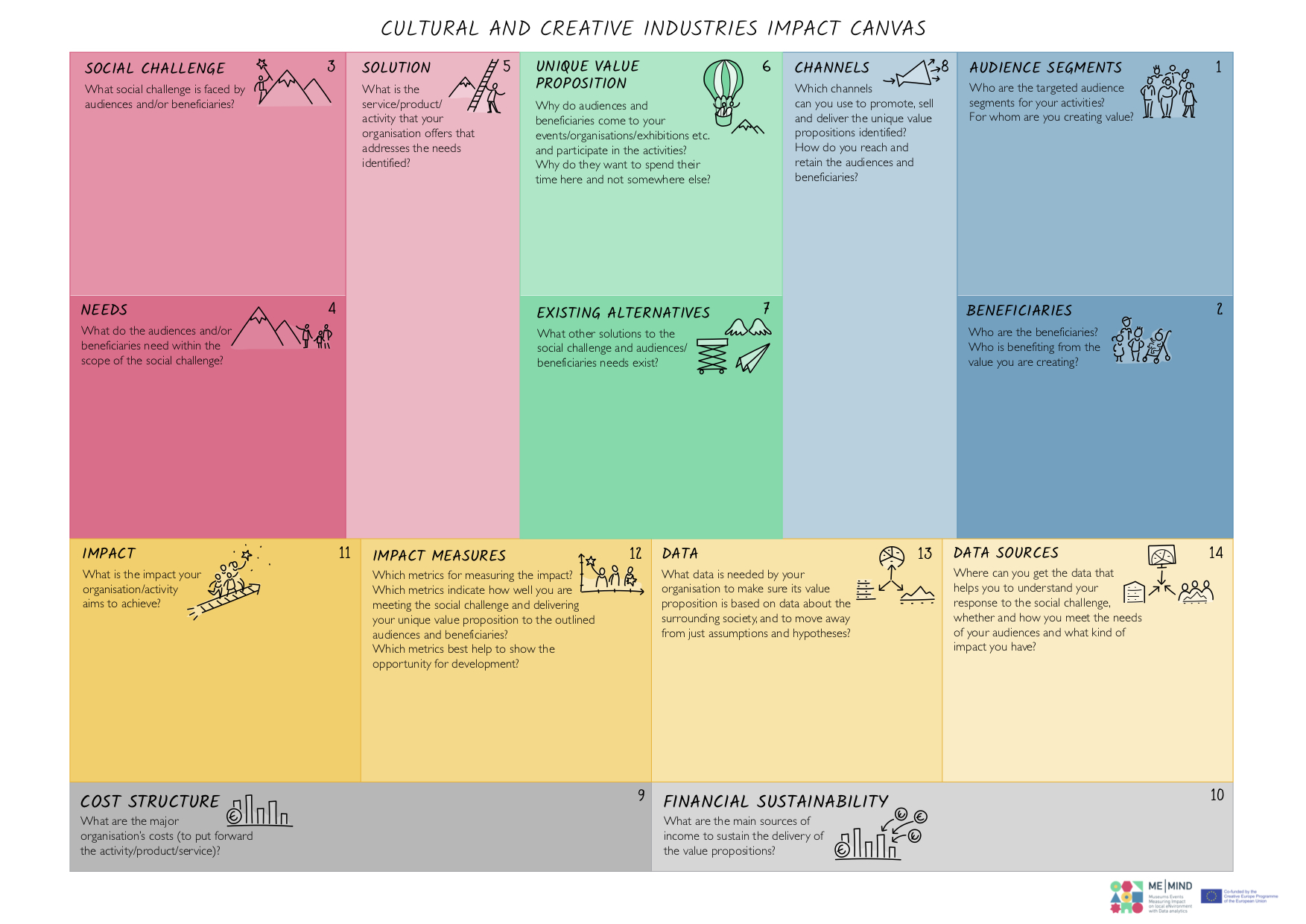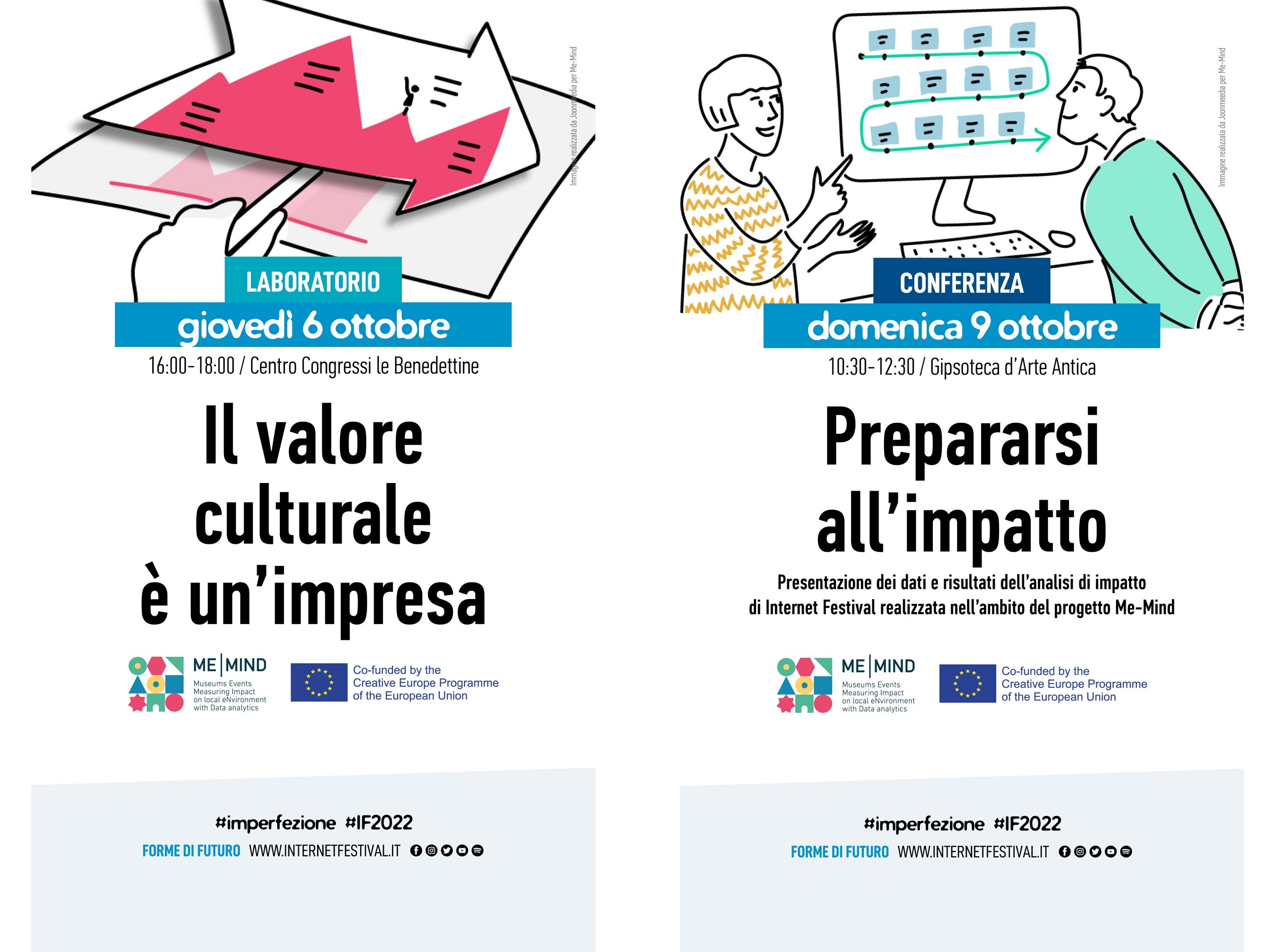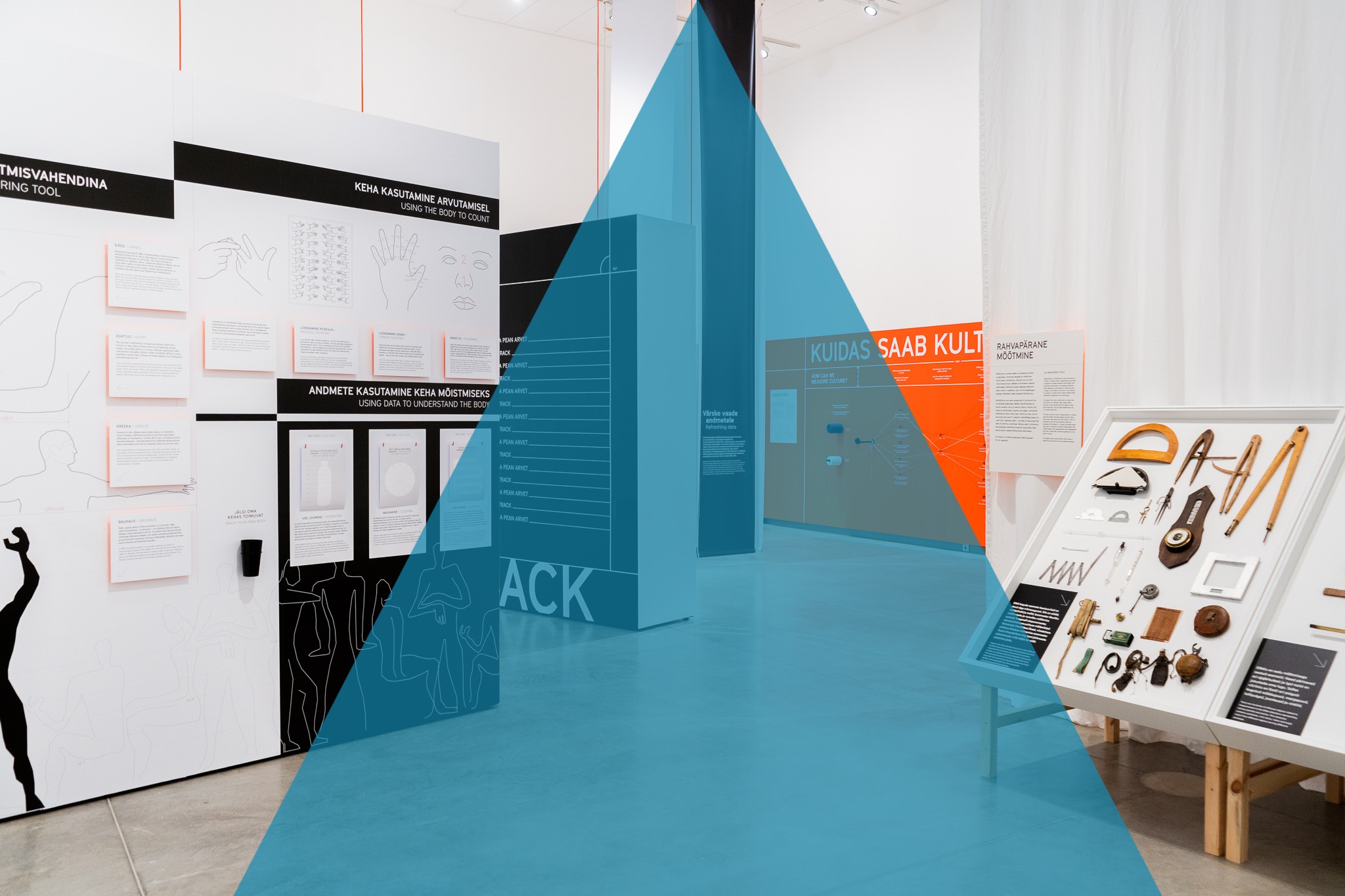Before hearing their voices let’s introduce Martina and Luca.
Martina is a 25 years old girl and she is currently a graduate student in history and forms of visual arts, performing arts and new media at the University of Pisa. She is writing a thesis on theater and the new Neapolitan dramaturgy. Martina met the festival in 2017, when she collaborated as a linguistic mediator within a path of school-work alternation. This year she decided to apply as a volunteer at the festival to work on the installation “Il Nodo della Cultura”.
Luca is a 24 years old guy, enrolled in Communication Sciences at the University of Pisa. As he said, the Internet Festival has always intrigued him and he’s always wanted to collaborate with the festival, because «I’m passionate about technology and the festival is made especially for nerds like me!». So this year he decided to apply as a volunteer, as soon as he heard about the Me-Mind installation. He figured the installation wouldn’t be the most restful position at the festival. And in fact volunteering for the installation required a lot of contact with the public and the ability to talk to different groups of people. Indeed he got in touch with people of all ages but with the great desire to participate in the installation.
We asked them to tell us what the strength of the installation was. Here’s how they answered us.
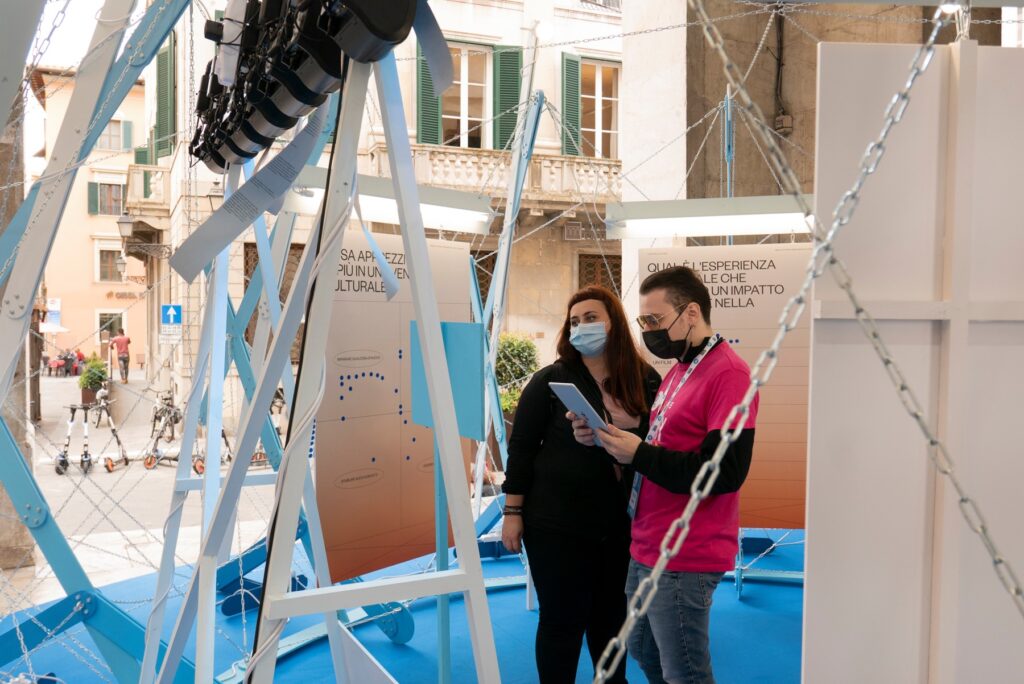 Martina: «The installation created curiosity. Many people approached it because they were captured by its form. Many of them also asked about the artistic references behind the installation’s design.
On Thursday and Friday [editor’s note: the festival lasts 4 days, from Thursday to Sunday of the second week of October] many people, who were interested in answering the questions contained in the installation (both the analog and digital parts), would stop in front of the “Il Nodo della Cultura” installation.
And Luca and I had time to spend with them. In this way, many spontaneous conversations arose between us and the festival audience on the topic of culture, art and entertainment. And everyone had something to say, even quite strong opinions.
One thing that many people told me during their experience was that they felt that their opinion, their voice, was considered important and taken into account by the festival.»
Martina: «The installation created curiosity. Many people approached it because they were captured by its form. Many of them also asked about the artistic references behind the installation’s design.
On Thursday and Friday [editor’s note: the festival lasts 4 days, from Thursday to Sunday of the second week of October] many people, who were interested in answering the questions contained in the installation (both the analog and digital parts), would stop in front of the “Il Nodo della Cultura” installation.
And Luca and I had time to spend with them. In this way, many spontaneous conversations arose between us and the festival audience on the topic of culture, art and entertainment. And everyone had something to say, even quite strong opinions.
One thing that many people told me during their experience was that they felt that their opinion, their voice, was considered important and taken into account by the festival.»
Luca: «Yes it’s true, the visual impact was the most intriguing and attractive aspect of the installation. Many people stopped because they were attracted by the shape, the colors of the structure. Of course, our team also gave an important contribution to the installation’s success. In short, we can say that the visual impact was the launching pad for everything, and then our ability to engage people came into play. I remember a couple of 90-year-olds, husband and wife, who not only participated in the analog part of the installation, but also in the digital one. I enjoyed listening to their bickering and reparteeing with each other. But in the end they walked away hugging each other.»
What, instead, needs to be improved for the next time we have such an experience at the Internet Festival?
M: «The first two days of the festival (Thursday and Friday) we were able to spend enough time with the public who visited the installation. I even remember the faces of the people who visited the “Il Nodo della Cultura” installation on those days. While on Saturday and Sunday, the audience tripled and we could not give everyone the same attention. People felt more comfortable when they could exchange a few words and thoughts with us, but during Saturday and Sunday we couldn’t do that anymore.»
L: «I definitely agree with Martina. It would have been necessary to increase the number of volunteer people, in order to work quietly, especially during the crowded hours of the day. Also consider that, with the passage of time, our performance has declined a bit.»
M: «Yes, it’s true: the installation was more enjoyable for those who visited it at quieter times. Because in this way they were able to have a personal experience, to feel they were heard by us and have a higher level of interaction with the Internet Festival’s staff, and we were able to have a human contact with the festival viewer.»
You had to deal with a heterogeneous public. Do you think that there was a part of the public that risked not being sufficiently involved in the installation? Did the installation speak to everyone or did it have limitations?
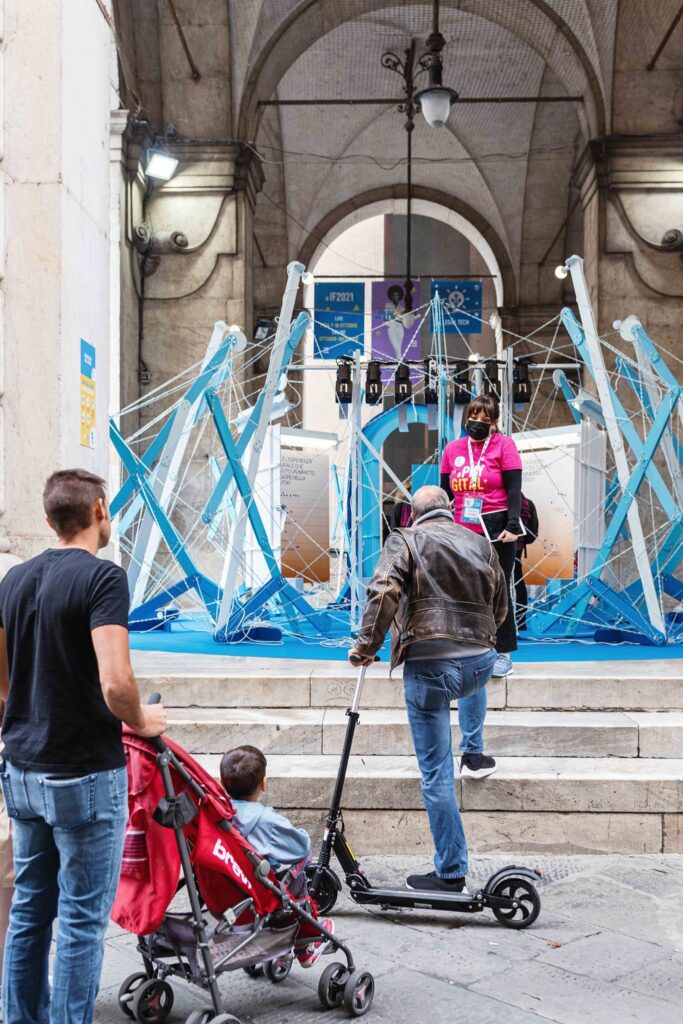 M: «It had age restrictions only on people who made their age an issue. Because we actually had a lot of people, as we mentioned above even in their nineties, who enjoyed the experience and didn’t feel threatened by the digital component of the installation. While other people felt uncomfortable with what they were experiencing. And that’s why they didn’t let Luca and I convince them to have the experience.»
M: «It had age restrictions only on people who made their age an issue. Because we actually had a lot of people, as we mentioned above even in their nineties, who enjoyed the experience and didn’t feel threatened by the digital component of the installation. While other people felt uncomfortable with what they were experiencing. And that’s why they didn’t let Luca and I convince them to have the experience.»
L: «I also think that the length of the digital questionnaire blocked people out a little bit in some cases, but on our end the experience was positive.»
M: «Yes, it’s true the atmosphere inside the festival was relaxed and friendly. We really enjoyed the possibility of having moments of sharing (such as lunches) with all the other volunteers of the festival, with whom we also spent carefree moments, despite the fatigue of those days.»

